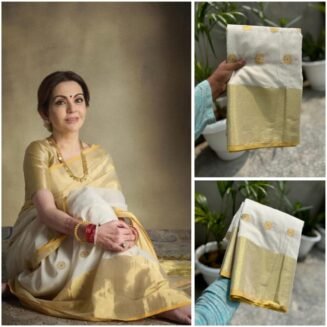Understanding the Saree Market and Weaver Community
The saree market is a dynamic and culturally rich segment of the fashion industry, encompassing various styles, fabrics, and weaving techniques that differ across regions. In recent years, there has been a resurgence of interest in traditional attire, with sarees increasingly being embraced not only in India but across the globe. This revival is evident through the growing popularity of handloom sarees, which reflect the art and heritage of local weavers. Current trends indicate a shift towards sustainable fashion, prompting consumers to seek authentic, ethically made garments. As a result, directly sourcing sarees from weavers has gained traction, allowing buyers to appreciate the craftsmanship and narratives behind each piece.
Supporting local weavers is crucial for several reasons. First, it ensures fair pricing and better remuneration for these artisans, who often face economic challenges due to competition from mass-produced alternatives. By establishing an online store focused on direct saree sales, entrepreneurs can bridge the gap between these skilled artisans and consumers, promoting fair trade practices. This initiative not only empowers weavers but also preserves traditional weaving techniques that are at risk of fading from modern fashion. When consumers purchase sarees directly from weavers, they contribute to sustaining local economies and supporting cultural heritage.
The relationship between weavers and consumers extends beyond mere transactions; it is a connection steeped in community values. Online platforms provide a unique opportunity to showcase the stories of the artisans, enhancing customer engagement through narratives that highlight their craftsmanship and dedication. Furthermore, the digital marketplace can educate consumers about the significance of various saree styles, fabrics, and traditional methods, fostering a greater appreciation for the art of weaving. As the saree market evolves, it is vital to recognize the role of technology in facilitating these connections, thus leading to a more equitable fashion industry that values both artisans and customers alike.
Setting Up Your Online Store: Key Considerations and Steps
Establishing an online store for direct saree sales requires careful planning and execution. The first step involves selecting the right e-commerce platform. Popular options include Shopify, WooCommerce, and Etsy, each offering unique features tailored to various business needs. Your choice should align with your technical expertise, budget, and desired level of customization. A user-friendly platform will enable a smoother start and improve the shopping experience for your customers.
Once the platform is selected, focus on designing an appealing website. A visually attractive and intuitive website encourages longer browsing times and enhances conversion rates. Choose a clean layout that highlights the intricacies of the sarees and makes navigation simple. Utilize colors and fonts that resonate with the cultural significance of sarees while ensuring that product details are easily accessible.
High-quality photography is vital to showcase the beauty of the sarees effectively. Invest in professional photography to capture the texture, colors, and craftsmanship of each piece. Clear, well-lit images from multiple angles provide customers with a comprehensive view, enhancing their confidence in purchasing online.
Effective marketing strategies are essential for attracting customers. Utilize social media platforms like Instagram and Facebook to share stunning visuals and engage with potential buyers. Collaborations with influencers who resonate with your target audience can bolster credibility and reach. Additionally, consider email marketing campaigns to inform subscribers about new arrivals, special promotions, and storytelling around the weavers and their crafts.
Inventory management should be well-organized to keep track of stock levels and minimize potential losses. Implement pricing strategies that reflect both the quality of the sarees and market trends. Lastly, focus on logistics; offer flexible shipping options, and prioritize excellent customer service to build loyalty and encourage repeat purchases.







